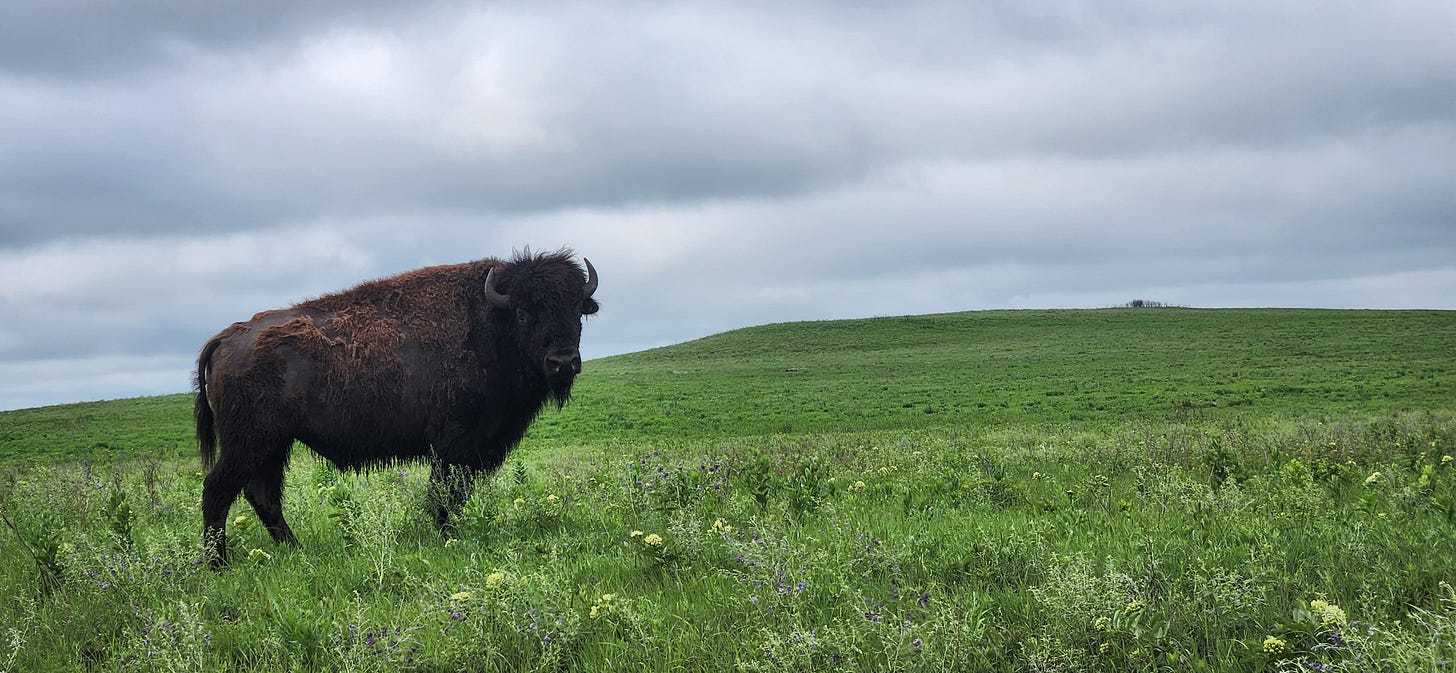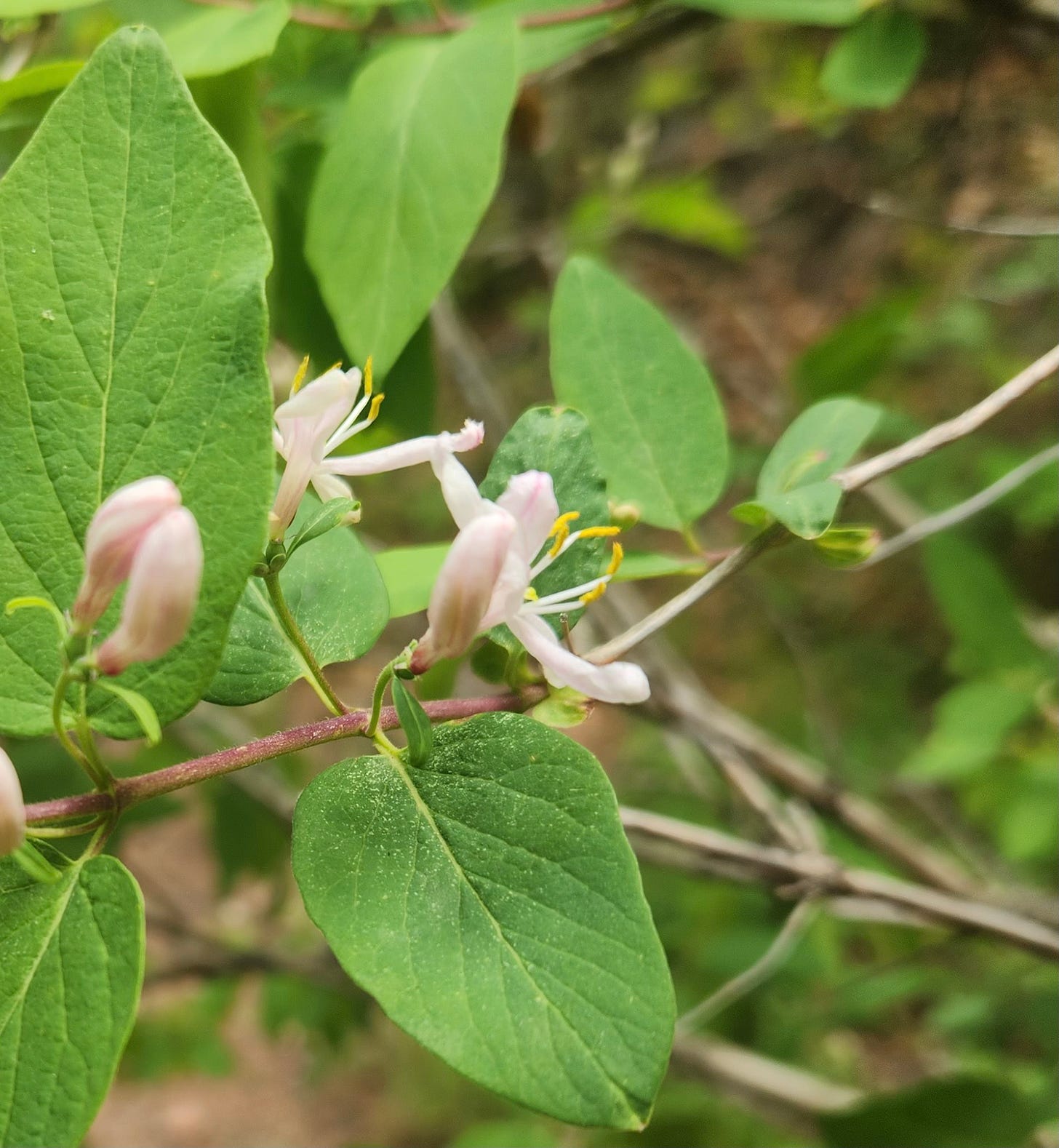Over the weeks of May and June, we traveled the distance from the western edge of the Mississippi flyway all the way to the Rocky Mountains. We wound our way through Arkansas, Oklahoma, Kansas, Colorado, Utah and eventually Wyoming. Below are a sampling of sightings we had along the way, all first-for-the-year. In the final days of June, we crossed from Wyoming over the Teton pass into bear country in Idaho; we’ve driven as far as Missoula, Montana, and left dear Blazer in the company of friends there. An airplane took us to Alaska, emulating our bird friends by flying point-to-point. This morning we await our departure for Toolik Field Station, where we will spend the last weeks of boreal summer cooking for researchers above the Arctic Circle. There will be many new and different sightings to share from our northern sojourn, but for now, please enjoy these snippets from the plains and peaks of the Lower 48.
May 1: Magnolia Warbler (Setophaga magnolia) and Chestnut-sided Warbler (Setophaga pensylvanica), Lake Catherine State Park, Arkansas: seen flashing like light on a gemstone facet, through the leafy trees on an early morning walk to a waterfall. Lake Catherine State Park is under-traveled in comparison to Hot Springs National Park, in nearby Hot Springs, Arkansas. We head to Hot Springs later, where the mineral waters are funneled into Victorian-era bathhouses. We walk around the park, drink water from the hot tap, and learn about how Victorians relaxed in vapor cabinets. From the promontory at the top of Hot Springs Mountain, the forests of Arkansas spread out uninterrupted like a leafy green carpet over the hills. How many warblers are hiding behind how many leaves?
May 4: Dicksissel (Spiza americana), Sequoyah National Wildlife Refuge, Vian, Oklahoma: heard and seen in the dry edges of fields as we tour the driving loop around the refuge. Dicksissels, with their colorful yellow breasts and their black-and-white cravats, are quite expected in the fields and grasslands of the middle part of the country; we've been waiting to run into one for several days already. Now that we hear them, their dry rattling calls seem to be echoing from every corner. US Fish and Game maintains a rotation of fields throughout the refuge, raising grains that will be left on the stalk for fall migrating waterfowl to feast on. Dicksissels, so proud and omnipresent, pop up indiscriminately from fallow fields, cultivated fields, whichever stalks of grass are highest for the perching and singing.
May 5: Bobolink (Dolichonyx oryzivorus), Tall Grass Prairie Preserve, Osage, Oklahoma: babbling out their mating displays from the fresh green fronds waving across the prairie. Bobolinks breed in the grassy meadows of midcoast Maine, where my mom lives; seeing them here knits my known horizons and these new horizons together into a seamless landscape. One difference, however: here they are seen in the company of several American Bison (Bison bison), whose population on the preserve is lovingly maintained by the Nature Conservancy. Would you like a bison of your very own? The older members of the herd are seasonally auctioned off to maintain a stable population within the preserve, as new calves are born every spring. Profits help maintain the preserve's many acres of land, fencing, roadways, and visitor and research facilities. Signage informs us to keep our distance as the bison are wild, yet signage reminds us that the “wilderness” is entirely maintained by human presence. The following night, we will lie low in a hotel room during a severe thunderstorm and watch coverage of the tornadoes touching down across the Tall Grass Prairie Preserve. Where do the Bison go in a tornado? Will their two tons of bulk keep them rooted to the ground? And what of the Bobolinks, topping the scales at only 2 ounces? Have their fragile nests withstood the storm? Minutes later, a separate tornado funnel will rip through the nearby town of Barnsdall and disassemble 70 human homes, including the former childhood home of Clark Gable, which we photographed like dutiful tourists on our way north to the preserve.

May 8: Black Tern (Chlidonias niger) and White-rumped Sandpiper (Calidris fuscicollis), Salt Plains National Wildlife Refuge, Jet, Oklahoma: scoped across shimmering salt flats off the Sandpiper Trail. Black Terns are bouyant in flight like all terns, but dark in silhouette, even when close enough to emerge from the heat shimmer in the distance, or hovering against a dark-bellied cloud. White-rumped Sandpipers are fast and franticly flocking, like many other sandpipers, but we look for the distinct white rump patch as they twist and turn in the air. It's an exercise in patience to identify specific sandpipers from among the many similarly sized and colored shorebirds along the flats. Most are simply too far to hope to identify, but a pair of White-rumpeds finally fly within range and land obligingly close to our view. I count it as a win, and then return to making cutesy wowza! sounds about the many, many beautifully red-throated Wilson's Phalaropes (Phalaropus tricolor) spinning on the shallow puddling waters.
May 18: Broad-tailed Hummingbird (Selasphorus platycercus) and Virginia's Warbler (Leiothlypis virginiae), Starsmore Discovery Center, Colorado Springs, CO: respectively zipping and flitting from pine to pine in the woods along the trail toward Helen Hunt Falls. We're on a brief morning stop on the way to Denver to start the geology field camp. However short our time limit, this is our first climb into the mountains since we rose up out of the plains, so making contact with the sights and smells of the montane pine forest is as necessary as putting your feet in the ocean upon arrival at the beach. Up here at elevation, we have the sense that we've gone back in time: all the trees are budding out small baby leaves, and the early springtime lilacs are in bloom. Hot Springs Mountain had them beaten by weeks! The Broad-tailed Hummingbirds have the loudest and most distinctive hum sound of any hummer; it takes only a few examples buzzing the tower to impress that sound on the memory. We will hear them constantly throughout our time in the west. Virginia's Warblers will not be so constant, however; their preference for open woodlands on steep slopes makes them a rarer sighting. We savor the experience of their gentle song, the sight of their creamy yellow breasts among the dark Ponderosa Pine (Pinus ponderosa) needles.

June 17: MacGillivray's Warbler (Geothlypis tolmiei), Fish Creek Falls, Steamboat Springs, CO: singing proudly in the underbrush, right from the parking lot as we arrive around 6 am. We set an ambitious alarm and roused ourselves for this early-morning pilgrimage before our long day wrapping up the geology field camp. Later, we will drive several hours to Denver and then spend several more hours unpacking and deconstructing the contents of the box truck into the camp storage unit. A nap and a strong coffee will be necessary to keep our eyes open on the drive, but for now, first thing in the early morning sunshine, the MacGillivray's and the Green-tailed Towhees (Pipilo chlorurus) are singing beautifully, the falls are thundering from the height of the hanging valley, and we are grateful to be breathing this clear mountain air.
June 22: Canada Jay (Perisoreus canadensis) and Pine Grosbeak (Pinicola enucleator), Ski Road, Roosevelt National Forest, Allenspark, CO: together in what must be a particularly favorable grove of pines, about halfway up the road to the trailhead. We are walking up the forest road, which is heavily potholed and features many large and menacing rocks. Our progress on foot is pretty slow, given the steep grade and the elevation. When a family of Canada Jays starts chattering, we gladly pause to watch them yammer. Are they discussing best food sources? Best perches? Plans for shifting to another stand of the trees later? Noticing our presence, or the presence of a threat? We can't tell, but we watch and listen, and eventually we see a bird that can't be a Jay because it's all bright red. Is it a Crossbill? Nope, that big chunky beak and the wingbars indicate a Pine Grosbeak, a bird we hadn't even remembered to hope to see this year. Our hearts and heels are inflated by this serendipity, and we bound up a bit more of the mountain. On our heels come a group of off-road vehicles, grinding their way up the mountain on lifted tires. A group of skiiers celebrating a birthday, they share a beer with us and then let their dogs bound ahead on the trail, likely scaring any Ptarmigan we might have seen. The beer at least is a compensation; we accept the beautiful view from the mountaintop as the rest of our due.
June 23: Black-capped Chickadee (Poecile atricapillus), Estes Park, CO: in some young pines along the Big Thompson River, calling that classic chickadee-dee-dee! How is it nearly the end of June and we hadn't seen a Black-capped Chickadee yet? We remained assured that we couldn't possibly end the year without one, but I admit a sigh of relief upon finally making it official. The world without Black-capped Chickadees would be a paler world indeed; wintering back in the northeast, they are the constant companions that will get you through an isolated winter. On the riverwalk through Estes Park, we hear them before we see them, and then practically jump for joy as we spot them in the binoculars. This day would be complete already, but maybe that is exactly why it is also the day we see families of American Dippers (Cinclus mexicanus) twice in two locations. One family includes two young juveniles bopping along the riverbank by the coffeeshop in town; we spy the other family at the magical crowning moment at the end of the hike out Cow Creek to Bridal Veil Falls, in Rocky Mountain National Park. We sit with our feet in the water, contemplating the falls and watching as the parents take turns flying larvae up to the babies on their mossy nest under the cold spray.



















Love your descriptions, Rach! And that big-sky pic of Tyler... wow!
I listened to each and every bird as I read along and had to laugh that you saw the first black-capped chickadee in June! Such joyful creatures at anytime, I can imagine how thrilled you were to come upon them after such a long stretch without them.
Safe travels to Toolik! Love you guys and your posts